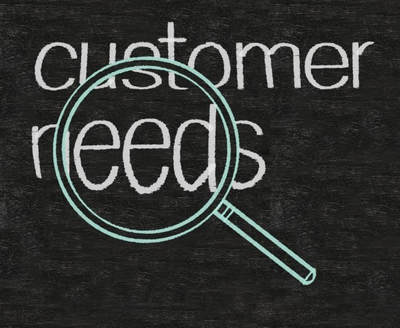|
By Ant Musker The sales cycle is the process that a firm undertakes while selling its products or services to their prospects. It encompasses all the activities associated with developing a sale – from generating opportunities to eventually (hopefully) closing the deal. Every company will have different steps and alternative activities in their sales cycle, depending on their own working culture and principles. However, identifying the key steps and stages improves sales efficiency, speeds up the process of on-boarding new sales hires and helps salespeople sell more. Sales patterns don’t always appear clearly in terms of ‘certain stages’ of a sale as being different events, but, in actuality, they are. And they’re all necessary to advance the sales process. The idea is to create a process that operates in a consistent and familiar manner. In other words, it is repeatable and/or systematized in order to create an environment for growth and acceleration. Why is The Sales Cycle Important? Knowledge of the sales cycle is fundamental to marketing success. Because anyone selling goods and services, whether online or in person-needs, to go through a process by which a lead becomes a sale. It’s the way that businesses both attain and retain customers. Keeping track of the sales cycle gives a business insight into the efficiency of their sales operations. If a company’s sales cycle is shorter than the average operation in its industry, it could mean that the company’s sales department is more effective than that of its competitors. Companies with fast cycles have generally better business because the longer it takes to make sale, the chance of the sale falling through is higher. So it can ultimately provide a huge advantage over your direct and aggressive competitors. Important Steps for an Efficient Sales Cycle I hope that by following these steps you can succeed in improving your own business sales cycle. Identify where you lack the ability to advance a sale, take notice of your weak points and keep working on them to enhance your sales results. Step 1: Generating Leads and Prospects The first (and vital) step is finding new potential customers. A good start to prospecting is to define what a good prospect looks like for your business and think about how you could approach such a person. Take the initiative of finding your ideal customer or customer(s) through research and data analysis. Step 2: Initiate Contact and Qualify the Prospects Now it’s time to utilize the collected leads in Step 1. Most often, a salesperson prefers to reach out to leads over the phone first, which is known as a cold-call. But you can also "cold-call" with a person face-to-face, or through an email, or through direct-mail marketing such as a sales letter, or even through social media. It's really just a matter of what is most convenient for your particular business, and which method produces the fasted desired results. You can qualify customers briefly during your initial contact. The idea is to confirm that your prospect is both able and potentially willing to buy your product before you spend a lot of time pitching your product or offer. Step 3: Identify Needs When you truly understand your prospects needs it becomes that much easier to be able to determine whether your solution (your product or service) is a good fit for them or not. Inf fact, you might find out that your initial product/service offer is actually the wrong fit, and as you begin to communicate and build a connection with your prospect, you might find that another product or service is actually a better fit for them and their particular situation. Equip yourself and your sales representatives with the questions and resources they need to uncover the right information in order to filter out the time-wasters. Step 4: Make Your Presentation/ Present Offer This step is the heart of your sales cycle, and it is where you’ll invest the most preparation time. You see, you’re not just selling your product but you’re also selling yourself as a person -- as someone that can be trusted. First, you are representing your company, so your appearance counts for a lot. Many sales associates usually look over this part of the presentation stage and forget that their appearance plays a BIG role in having compelling presentation. Second, you need to present your offer as a solution to your prospect’s pain points. Tailor your proposal to the information you have gathered in the previous stages of the sales cycle. Step 5: Address the Prospect’s Objections This is where you will be heavily involved. Objections can actually be a good sign because it shows that your prospect is at least interested in buying your product or service or he/she would not bother to be objecting. In fact, you really shouldn't view your prospect's objections as "objections", but rather as complaints -- because that is what they really are. You see, there are actually three very important rules to selling. First, no one likes to be sold, but everyone likes to buy. In other words, buying implies being in control of the purchasing process. Being sold is the complete opposite. When a prospect feels sold, and the product doesn't work, then it becomes the salespersons fault. However, when a prospect feels like they are in control of the buying process, and the product still doesn't work, then there is a feeling of ownership that comes over the buyer, and they end up personally accepting the blame for the product not working. The second rule of selling is: People buy for emotional reasons, not rational ones. What that means is we all buy based on an emotional trigger or impulse. In other words, we buy because of reasons of the heart first, then we attempt to engage logic as a means to validate why are emotional decision is a good one -- which brings me to the third rule of selling: People need to use logic to justify their emotional decision. And that is what this stage of the sales cycle is really all about. They are not really "objections", per se, but rather the prospect trying to validate why purchasing your product or service is the right thing to do (or not). Understand that objections are really just your prospect's way of getting their heads to catch up with what their hearts are already telling them, and prepare your sales team to handle them appropriately. This will increase your win rate and speed up your sales process. Step 6: Ask To Complete and Close the Sale When you are done with your presentation, have answered your prospect's questions and addressed their objections (complaints), it’s time to ask for the sale. Get the sale across the finishing line and drive the deal to a successful close. Mastering the different techniques for closing takes both training and experience and will come more naturally to some more than others. What you have to understand about the close is this: You really have not provided any value until you have made the close and entered into the exchange process. In other words, by this time you should have a clear understanding of what problem it is your prospect is facing, and have presented the best possible solution (your product) there is to aid them in overcoming that problem... However, it isn't until they have purchased your product and have put it to work that value has actually been delivered -- and that doesn't happen until the close has been made. Step 7: Repeat Sales and Collect Referrals Putting a follow-up process in place will let you know if your customers are happy or not. This process will earn you repeat sales, as well as get you referrals for new leads that you can put through the sales cycle, or you could at least deliver your business card as a means to stay in the front of your new leads mind. Remember to ask them if they are aware of anyone else who might be in the market for goods or services you provide in order to build a growth network using the kind words of the client as a testimonial. Also, bear in mind, if you are not able to close the deal (for whatever reason), you can still request a referral from your prospect by saying something like, "I understand that you may not be able to purchase [said product] today, but would you happen to know anyone that might benefit from having this product that you could point me in the direction towards right now?" This is what is known as taking a "failed" (or negative) outcome and turning it into a success (or a positive).  Author Bio - Ant Musker is a content writer at Whoisvisiting.com, whilst also involved in marketing activities including email, social and SEO. He has various experience in sales and marketing environments, working for start-up companies and in the PR industry.
Comments
|
Company
Our Target Markets
|
Divisions (Products & Services)Ultimate Guides
|
Core Competences
Newsletters |
Risk Free & Satisfaction GuaranteeIf you are not completely satisfied, simply return the product, along with proof of purchase, within 14 days and you will receive a full refund (less shipping and handling).
Note: Excludes, MP3s and all other downloadable products. |
Privacy & SecurityAll your information is safe and secure. The entire transaction will take place on a secure server using SSL technology.
In order to be compliment with the new GDPR requirements, you can review our updated Privacy Policy HERE. |
Having Trouble Placing Your Order?Please email us at [email protected]
We'll be happy to assist you. LETS GET SOCIAL
|
Copyright © William Ballard & Associates, LLC (2023 - 2028) • All Rights Reserved












